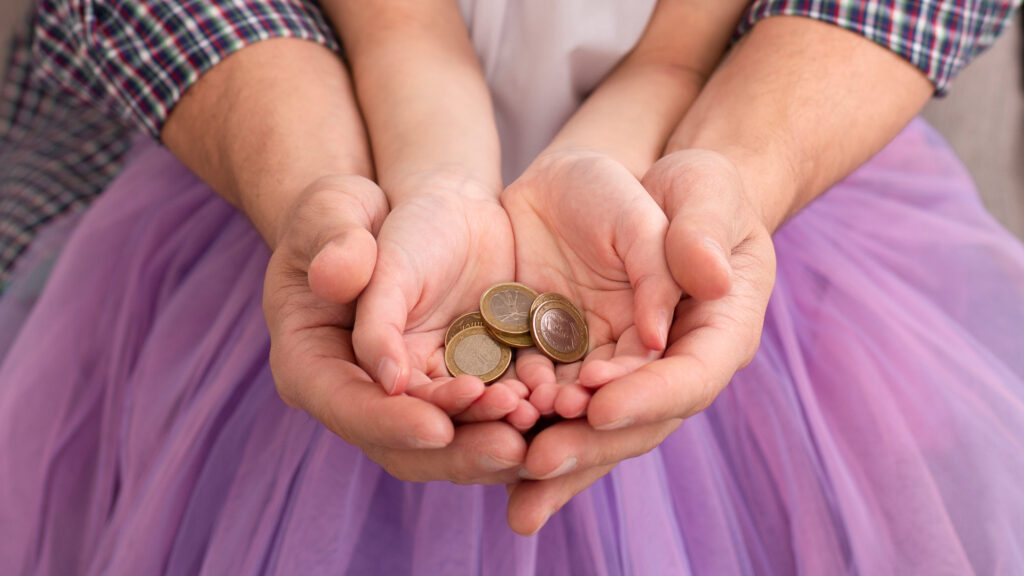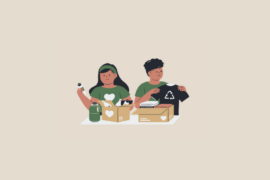Natural disasters, ranging from hurricanes and floods to earthquakes and wildfires, have an undeniable and profound impact on communities worldwide. The aftermath of these calamities often leaves individuals and entire regions grappling with immense challenges, from displaced populations to the destruction of critical infrastructure. The road to recovery can be long and arduous, requiring substantial financial resources and timely assistance.
In the face of such adversity, the concept of crowdfunding emerges as a beacon of hope and solidarity. Crowdfunding, a contemporary fundraising approach that harnesses the collective power of individuals, has the potential to play a pivotal role in alleviating the suffering caused by natural disasters.
Understanding Crowdfunding
In the digital age, crowdfunding has emerged as a dynamic and innovative approach to fundraising, allowing individuals, businesses, and organizations to raise capital through the collective contributions of a large number of people. At its core, crowdfunding harnesses the power of the crowd, enabling a diverse array of projects and initiatives to secure financial support in a decentralized and accessible manner.
Crowdfunding is a fundraising model that involves pooling small contributions from a large number of individuals to finance a project, idea, or cause. This collaborative approach is facilitated through online platforms that connect those in need of funding with a global network of potential supporters. Whether it’s supporting a creative endeavor, launching a startup, or, as explored in this context, aiding disaster-stricken communities, crowdfunding provides a democratic and inclusive means of raising funds.
Types of Crowdfunding:
Reward-Based Crowdfunding:
- Participants contribute funds in exchange for non-financial rewards or perks.
- Common in creative projects, backers receive tangible items, exclusive access, or acknowledgments based on their level of contribution.
Donation-Based Crowdfunding:
- Individuals contribute funds without expecting financial returns.
- Widely used for charitable causes, disaster relief, and community support.
- Emphasizes the altruistic nature of crowdfunding, fostering a sense of community and solidarity.
Equity-Based Crowdfunding:
- Investors receive equity or shares in the funded project or company.
- More common in business ventures, allowing backers to share in the potential financial success of the initiative.

The Role of Crowdfunding in Natural Disaster Relief
In the wake of natural disasters, traditional aid channels often find themselves constrained by bureaucratic hurdles, logistical challenges, and resource limitations. Established relief mechanisms, while undoubtedly critical, may struggle to deliver prompt and targeted assistance due to the intricate nature of disaster response. Red tape, slow decision-making processes, and a reliance on centralized structures can impede the swift delivery of aid to those in urgent need. Moreover, the scale of destruction can overwhelm traditional aid organizations, creating gaps in the provision of essential services.
Decentralized and Rapid Response of Crowdfunding:
Crowdfunding emerges as a transformative force by offering a decentralized and rapid-response alternative to traditional aid channels. Through online platforms, communities and individuals can directly connect with those affected by disasters, bypassing the intermediaries that might slow down the relief process. The immediacy of crowdfunding allows for real-time responsiveness, enabling funds to be raised and disbursed swiftly to address immediate needs such as shelter, food, and medical assistance.
One of the key strengths of crowdfunding in disaster relief lies in its ability to mobilize resources from a broad and diverse range of contributors. This inclusivity ensures that assistance comes not only from government bodies or large organizations but also from individuals who are deeply moved by the plight of those affected. This grassroots approach fosters a sense of global solidarity, turning individuals from around the world into active participants in the recovery process.
Moreover, crowdfunding platforms provide a transparent avenue for donors to track the impact of their contributions. This transparency not only builds trust but also holds campaigns accountable, ensuring that funds are directed towards their intended purposes. By utilizing technology to streamline the fundraising and distribution processes, crowdfunding facilitates a more efficient, targeted, and people-centric approach to disaster relief.

Benefits and Challenges of Crowdfunding in Disaster Relief
Crowdfunding fosters a direct connection between those in need and the individuals providing support. This direct link ensures that assistance is tailored to the specific requirements of affected communities, addressing immediate needs and facilitating long-term recovery. By empowering the community itself, crowdfunding initiatives enhance local resilience and self-sufficiency.
Quick Mobilization of Resources:
The agility of crowdfunding is a significant advantage in disaster scenarios. Unlike traditional aid channels that may take time to mobilize, crowdfunding campaigns can be launched swiftly, tapping into the collective compassion of a global audience. This rapid mobilization is crucial for providing timely assistance, particularly in the critical early stages of disaster response.
Global Reach:
Crowdfunding transcends geographical boundaries, allowing individuals worldwide to contribute to relief efforts. The global reach of crowdfunding platforms enables a diverse and widespread network of donors, ensuring that communities affected by natural disasters receive support from a broad spectrum of contributors. This international collaboration reflects a shared commitment to alleviating human suffering on a global scale.
Challenges of Crowdfunding in Disaster Relief:
Transparency is paramount in maintaining the credibility of crowdfunding campaigns. Donors must have confidence that their contributions are being used for the intended purposes. Crowdfunding platforms need robust mechanisms to verify the legitimacy of campaigns, track fund utilization, and provide clear communication on the impact achieved. Addressing transparency concerns is crucial to building and sustaining trust within the donor community.
Potential Misuse:
The open nature of crowdfunding also poses challenges related to potential misuse. While the majority of campaigns are genuine, there is a risk of fraudulent or misleading initiatives. Establishing mechanisms to verify the authenticity of disaster relief campaigns and implementing safeguards against misuse is imperative. This involves a collaborative effort between crowdfunding platforms, regulatory bodies, and the online community to ensure the integrity of the fundraising process.
Scalability Issues:
Crowdfunding’s success is often tied to the visibility and momentum gained by a campaign. However, achieving this visibility can be challenging for smaller, less-publicized initiatives. Ensuring that all communities, regardless of size or prominence, can access crowdfunding resources requires strategies to address scalability issues. This includes raising awareness about lesser-known campaigns and optimizing platforms for discoverability.
Platforms for Disaster Relief Crowdfunding
Several crowdfunding platforms have emerged as powerful tools for channeling support to communities affected by natural disasters. Each platform has its unique features and strengths, catering to diverse fundraising needs. Here’s an overview of some popular crowdfunding platforms that have played a significant role in disaster relief efforts:
- Werbylo: Known for its user-friendly interface, Werbylo is a versatile platform widely used for personal and charitable causes, including disaster relief. It allows individuals to create campaigns quickly and share compelling stories to engage a broad audience.
- Kickstarter: While commonly associated with creative projects, Kickstarter has been utilized for disaster-related initiatives, especially those focusing on innovative solutions for rebuilding. It operates on an all-or-nothing funding model, where a campaign must reach its goal to receive funds.
- Indiegogo: Indiegogo offers both reward-based and donation-based crowdfunding. Its flexibility makes it suitable for a range of projects, including disaster relief efforts. Campaigns can choose to offer perks or run purely donation-driven campaigns.
- Crowdfunder: More oriented towards equity crowdfunding, Crowdfunder is suitable for businesses and startups involved in disaster recovery solutions. Investors can support projects in exchange for equity, making it a potential platform for sustainable and impactful initiatives.
- Chuffed: Chuffed specializes in crowdfunding for social causes and nonprofits. With a focus on charitable initiatives, it provides a platform specifically designed for campaigns dedicated to addressing societal challenges, including disaster relief.
Guidance on Choosing the Right Platform for a Disaster Relief Campaign:
Selecting the most suitable crowdfunding platform for a disaster relief campaign requires careful consideration to maximize impact. Here are key factors to guide this decision-making process:
- Campaign Type: Consider the nature of the disaster relief campaign. Donation-based platforms like Werbylo and Chuffed are ideal for humanitarian aid, while platforms like Kickstarter may suit projects focused on rebuilding and innovation.
- Fees and Fund Allocation: Examine the fee structures of different platforms, including processing fees and any additional charges. Some platforms have lower fees for personal causes, while others may cater better to business-oriented initiatives. Ensure that the chosen platform aligns with the goals of the campaign.
- Visibility and Reach: Evaluate the platform’s reach and visibility. Some platforms have a larger user base and established networks, increasing the potential for a campaign to gain traction. Consider the platform’s marketing tools and resources to enhance the campaign’s visibility.
- Campaign Duration and Funding Model: Determine the optimal campaign duration and funding model. Some platforms allow flexible timelines, while others operate on fixed durations. Choose a model that aligns with the urgency and scope of the disaster relief needs.
- Platform Policies and Support: Review the platform’s policies on transparency, verification, and campaign management. Platforms with robust support systems, clear guidelines, and responsive customer service can contribute to a smoother campaign experience.
Tips for a Successful Disaster Relief Crowdfunding Campaign
- Set Clear Goals: Clearly define the objectives of the campaign, including the target amount and specific outcomes. Transparent goals help donors understand the purpose and impact of their contributions.
- Thorough Research: Conduct comprehensive research to understand the unique needs of the disaster-affected community. Tailor the campaign’s focus to address specific challenges and articulate how funds will be utilized.
- Create a Compelling Narrative: Craft a compelling and empathetic narrative that tells the story of the disaster and the community’s resilience. Utilize visuals, testimonials, and real-life examples to evoke emotions and connect with potential donors.
- Establish a Realistic Budget: Develop a detailed budget outlining how the funds will be allocated. Transparency in financial planning builds trust among donors, demonstrating a responsible and accountable approach to relief efforts.
- Utilize Multichannel Fundraising: Diversify fundraising efforts by incorporating various channels, such as email campaigns, events, and partnerships. A multi-pronged approach enhances outreach and engagement.
Engaging the Community and Building Trust:
- Community Involvement: Involve the affected community in the campaign planning process. Seek their input, address their concerns, and ensure that the campaign aligns with their immediate needs and long-term aspirations.
- Regular Updates: Provide regular and transparent updates on the campaign’s progress. Timely communication instills confidence in donors and demonstrates the impact their contributions are making.
- Leverage Local Influencers: Collaborate with local influencers, community leaders, and organizations to amplify the campaign’s reach. Their endorsement can enhance credibility and encourage broader community participation.
- Testimonials and Success Stories: Share personal testimonials and success stories from individuals directly benefiting from the campaign. Humanizing the impact creates a powerful narrative that resonates with potential donors.
Utilizing Social Media and Other Online Channels Effectively:
- Create Compelling Content: Develop visually appealing and emotionally resonant content for social media platforms. Use images, videos, and infographics to tell the campaign’s story concisely.
- Leverage Hashtags: Create a unique and easily shareable campaign hashtag to unify online conversations. Encourage supporters to use the hashtag when sharing their contributions or engaging with campaign updates.
- Engage with the Audience: Actively engage with the online community by responding to comments, thanking donors publicly, and addressing questions. Building a sense of community fosters ongoing support and commitment.
- Collaborate with Online Communities: Identify and collaborate with online communities, forums, and groups that share an interest in disaster relief. These partnerships can amplify the campaign’s reach and connect with individuals passionate about the cause.
The Future of Crowdfunding in Disaster Response
- Blockchain Technology: The integration of blockchain technology can enhance transparency and traceability in crowdfunding. Smart contracts can automate fund distribution based on predefined criteria, ensuring that contributions directly reach intended beneficiaries. This innovation minimizes the risk of misuse and fraud.
- Tokenization of Impact: Tokenization allows donors to receive digital tokens representing their contribution. These tokens can be traded or redeemed for specific benefits, creating a new dimension of engagement. This approach may incentivize sustained support and foster a more dynamic and interactive relationship between donors and disaster relief initiatives.
- Artificial Intelligence (AI) for Campaign Optimization: AI algorithms can analyze data from previous successful campaigns, donor behavior, and market trends to optimize crowdfunding strategies. By leveraging machine learning, campaigns can be tailored to specific audiences, increasing their reach and effectiveness.
- Virtual Reality (VR) for Immersive Storytelling: VR technology can provide immersive experiences, transporting donors into the heart of disaster-affected areas. This firsthand perspective enhances empathy and connection, potentially driving increased engagement and contributions.
Collaborations between Governments, NGOs, and Crowdfunding Platforms:
- Government-Backed Initiatives: Governments can collaborate with crowdfunding platforms to create official disaster relief campaigns. These campaigns could benefit from broader visibility, trust, and the ability to leverage existing government infrastructure for more effective distribution of aid.
- NGO Partnerships: NGOs and crowdfunding platforms can form strategic partnerships to amplify the impact of disaster relief campaigns. NGOs bring on-the-ground expertise, while crowdfunding platforms provide the means to mobilize a global community. Collaborations can enhance efficiency, coordination, and the overall success of relief efforts.
- Data Sharing for Targeted Interventions: Collaboration allows for the sharing of data between governments, NGOs, and crowdfunding platforms. This data sharing can enable more targeted and efficient interventions, ensuring that resources are directed to areas with the greatest need.
- Joint Awareness Campaigns: Governments and NGOs can leverage the reach of crowdfunding platforms to launch joint awareness campaigns. This collaborative approach not only raises funds but also educates the public on disaster preparedness, risk reduction, and the importance of community resilience.

Conclusion
Crowdfunding in natural disaster relief stands as a testament to the collective compassion and solidarity that defines our shared humanity. By harnessing the power of the crowd, we unlock a pathway to a more responsive, transparent, and community-driven approach to disaster recovery. As we move forward, let us embrace the spirit of generosity and collaboration, recognizing that together, we have the capacity to create positive change in the lives of those affected by natural disasters.
Werbylo: Empower Your Cause with Effective Crowdfunding
In the spirit of community-driven support and transformative change, consider leveraging the power of Werbylo, a cutting-edge fundraising software designed to empower nonprofits and individuals alike. With its free and user-friendly platform, Werbylo offers a unique combination of traditional fundraising and crowdfunding features, making it an invaluable tool for those passionate about making a difference.
How Werbylo Can Make a Difference:
-
- Free Fundraising Software: Werbylo provides nonprofits with a comprehensive and cost-effective fundraising solution. The free software enables organizations to streamline their fundraising efforts, saving resources that can be redirected toward the causes they champion.
- Crowdfunding for Impact: With Werbylo’s integrated crowdfunding feature, individuals and organizations can launch powerful campaigns tailored to disaster relief, community development, and various other noble causes. This feature facilitates direct engagement with a global audience, amplifying the impact of your fundraising initiatives.
- User-Friendly Interface: Werbylo’s intuitive and user-friendly interface ensures that both nonprofits and donors can navigate the platform effortlessly. From campaign creation to donation processing, Werbylo simplifies the fundraising process, allowing you to focus more on your cause.
- Transparency and Trust: Werbylo places a premium on transparency, offering robust tools to track and communicate the impact of your campaigns. This commitment to openness builds trust with donors, fostering lasting relationships that extend beyond individual fundraising efforts.
In the spirit of collective action and positive change, take the first step with Werbylo today. Whether you’re a nonprofit organization striving to maximize your impact or an individual with a passion for helping others, Werbylo is your ally in the journey toward creating a better, more compassionate world. Sign up now.





